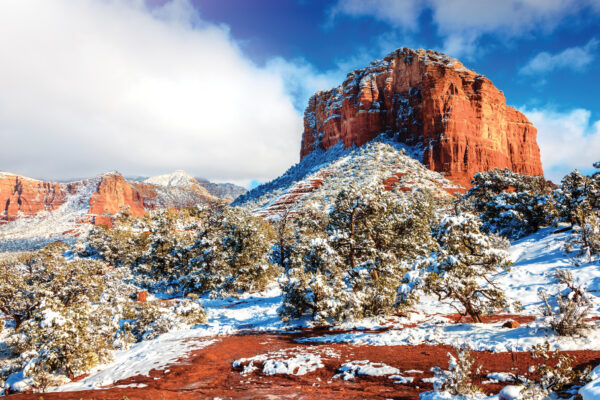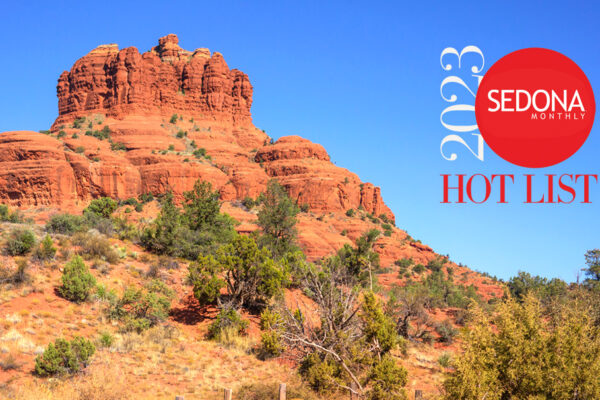Everyone knows that Northern Arizona has some of the most stunningly beautiful rocks on all the globe. But did you know that it is also home to hundreds of volcanoes? With such landscape gems as Sedona’s Red Rocks, the Grand Canyon, Monument Valley and the Petrified Forest and Painted Desert, it is understandable how overlooked the volcanic landscape may be. But Northern Arizona also has some world-class cinder cones, lava flows, dome volcanoes and a large stratovolcano that is also the highest mountain in the state.
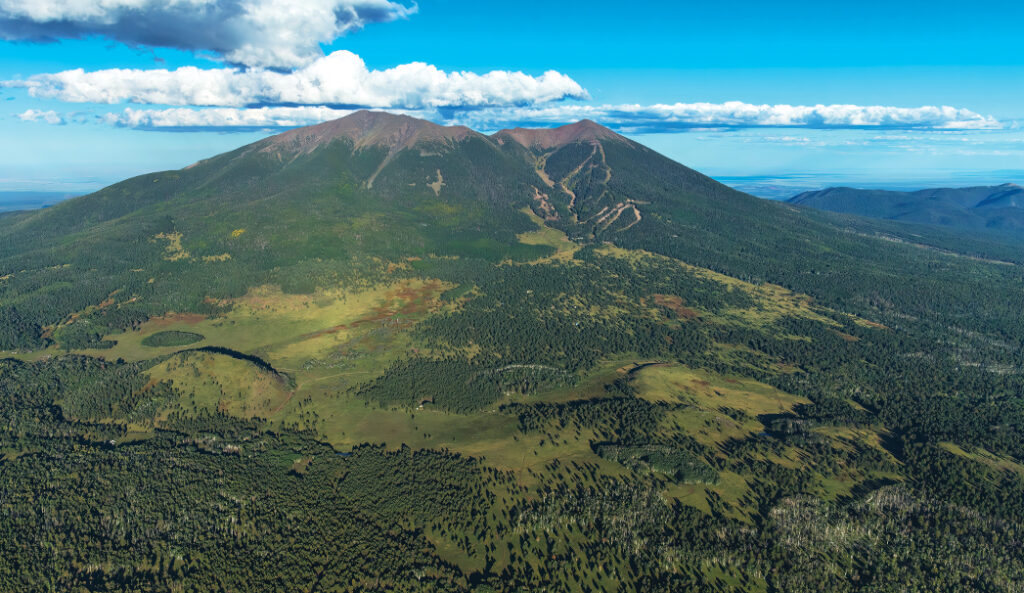
The largest volcano in the volcanic field is San Francisco Mountain. This beautiful mountain is the highest in Arizona, but once stood up to 3,000 feet higher before its top collapsed sometime between 95,000 to 400,000 years ago. Imagine a point following an upward trend from the base of each slope on the left and right. Detailed studies of the volcano reveal that it may have had two cones before they collapsed.
Over 600 volcanoes are found within the San Francisco Volcanic Field, taking its name from the largest of them all, San Francisco Mountain, or more commonly called the San Francisco Peaks. This large edifice began to grow some 2.8 million years ago when lava erupted in fiery fountains of ash and streaming lava flows. Occasionally, thick and pasty lava constructed a few domes within the massif. This massif was soon overwhelmed by more ashy explosions and fluid lava flows.
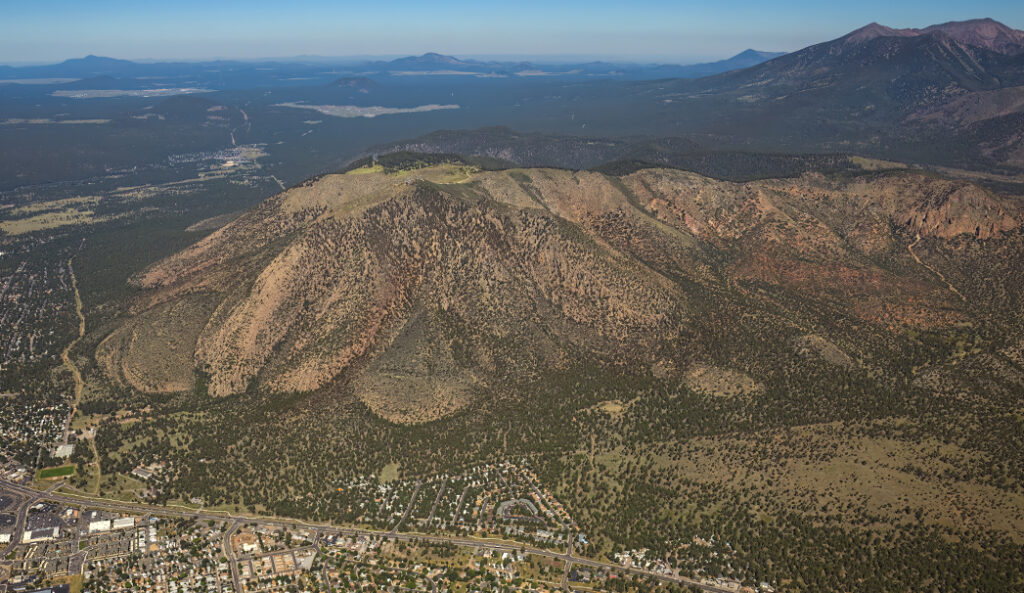
Flagstaff lies at the base of the Mt. Elden dome volcano, which rises some 2,000 feet above the city. Like all dome volcanoes, the lava here, erupting onto the plateau about half a million years ago, was quite pasty and resistant to flow. Slow-moving, red-hot lava produced the obvious rocky lobes that are highlighted by their less dense forest cover. The San Francisco Peaks rise above Mt. Elden in the upper right and contain dome structures within their mass. Kendrick Peak is barely visible behind the left slop of the Peaks, with Sitgreaves and Bill Williams mountains in the far distance (right to left).
Eventually, the mountain grew to over 15,000 feet, which would have made it the tallest mountain in the lower 48 states. But sometime after 400,000 years ago, the fires went out beneath this rocky behemoth, and it eventually collapsed downward, losing its top. Gravitational collapse is how it lost its top. Adjacent to the Peaks are numerous dome volcanoes, steep piles of a volcanic rock called dacite. O’Leary Peak, North Sugarloaf, Mt. Elden, Kendrick Peak, Sitgreaves Mountain and Bill Williams Mountain are examples of these type of volcanoes.
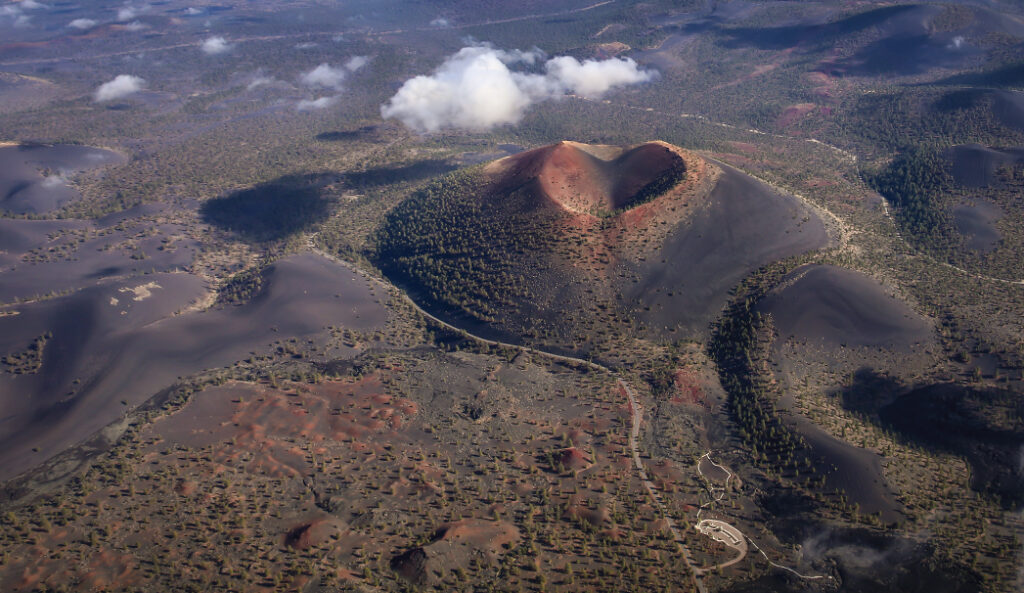
Sunset Crater is the youngest volcano within the volcanic field and erupted around 1085 C.E. (Common Era, formerly written as AD 1085). The eruption began as a five-mile-long fissure that became centered where the cone is located today. The Sinagua natives were living in the area when the eruption began and were initially forced from the area. The mulching qualities of the cinder, however, allowed them to return and inhabit Wupatki Pueblo nearby.
They form when very viscous lava is erupted and piles higher and higher around the erupting vent (viscosity is a measure of any fluids’ resistance to flow – the higher the viscosity, the more resistant to flow it is). See the accompanying photos of Mt. Elden and Kendrick Peak for examples of these types of volcanoes. The most common type of volcano within the field however, are the numerous cinder or scoria cones that dot the landscape from near Williams to east of Flagstaff. The most recognizable of these is Sunset Crater, which erupted a mere 938 years ago (a geologic instant)!
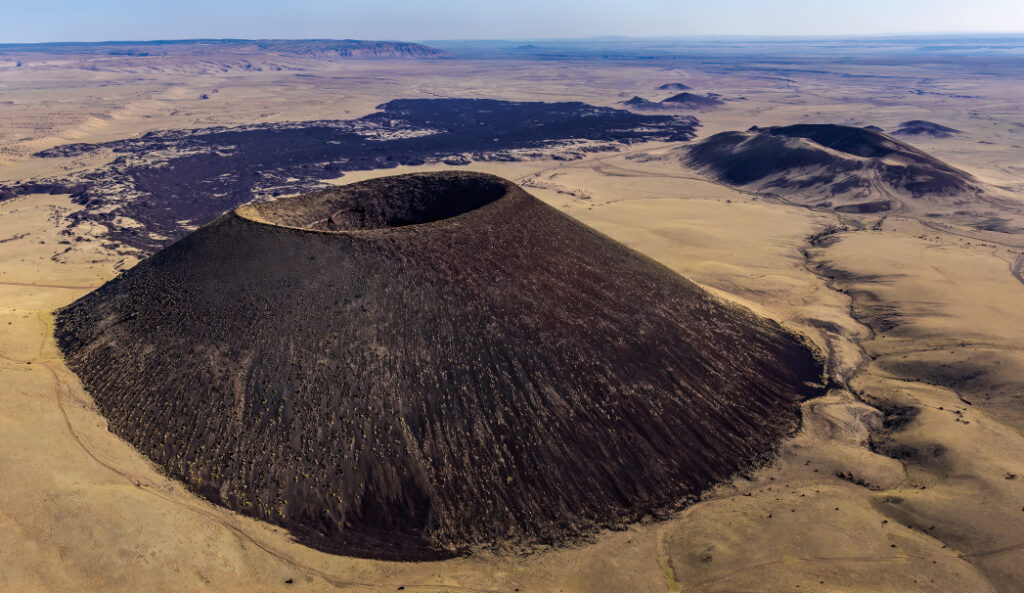
Symmetrically shaped SP Crater is one of the more recognizable cones in the San Francisco Volcanic Field. It erupted sometime between 5,500 and 70,000 years ago, with different dating techniques yielding conflicting ages. A hard cap of welded cinders protects its top from severe erosion. This view toward the north highlights the dried grass that surrounds the lava rocks and reveals the lava flow that emanated in that direction from the base of the cone.
In the late 1920s, a Hollywood movie was about to be filmed that would have included exploding the side of the cone, such that a Western town would have been buried. The movie was to be called “Avalanche.” Harold Colton, the founder of the Museum of Northern Arizona caught wind of the scheme and petitioned the U.S. government to save the crater, rich in Native American history and geologic information. President Herbert Hoover made it a national monument in 1930.
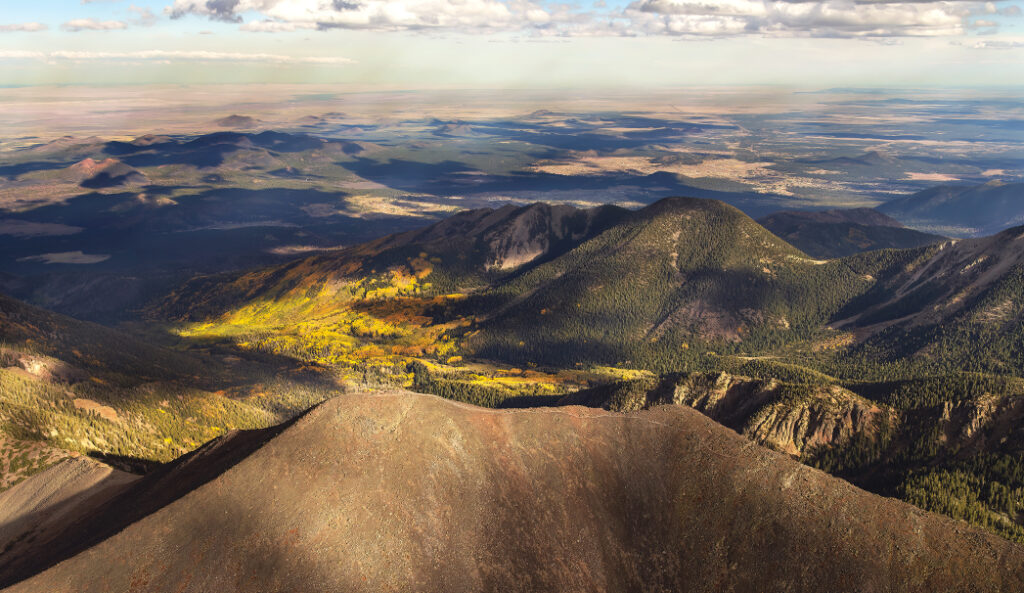
Fall colors grace the Inner Basin behind Humphrey’s Peak, the tallest mountain in Arizona at 12,635 feet. Note the trail that ascends the peak from right to left near its crest. The top of the mountain is composed of andesite lava rock, first named for rocks found in the Andes Mountains of South America. These lava flows were interbedded with ashy material that erupted from the central vent of the volcano.
Hundreds of other scoria cones dot the landscape – every mountain between Williams and Flagstaff is a volcano. One curious aspect of them all is that they get younger to the east, such that Bill Williams Mountain is between 3.7 and 4.2 million years old; Sitgreaves between 1.90 and 2.84 million years; Kendrick is 1.35 and 2.7 million years; Mt. Elden is about 0.5 million or 500,000 years; and O’Leary Peak is about 0.225 million or 225,000 years.
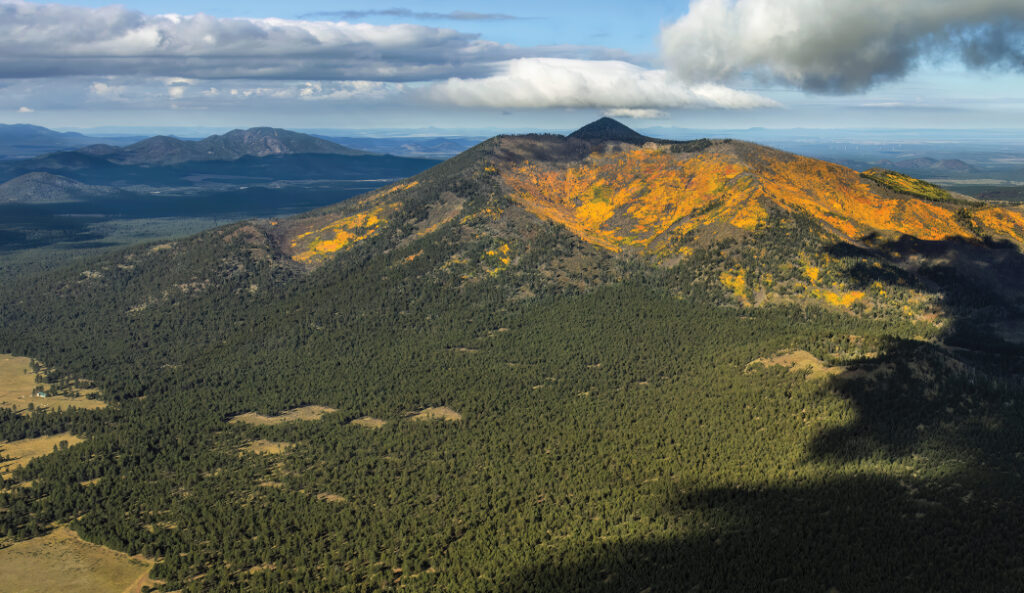
Several dome volcanoes, such as Kendrick Peak, are found within the volcanic field. Dome volcanoes form when viscous magma erupts and piles higher and higher above the vent as dense dacite lava. These lavas may have the viscosity of toothpaste or even bubble gum. Two other dome volcanoes are present in the background, Sitgreaves Mountain (middle distance) and Bill Williams Mountain (far distance). Their alignment suggest that a fault may account for their placement.
Geologists understand that as the North American continent drifts westward at about the rate our fingernails grow (1 to 2 inches per year), a stationary plume of magma progressively rises to the surface onto this westward drift. Thus, the volcanoes are younger east of Flagstaff, near Sunset Crater. Enjoy these volcanoes.


